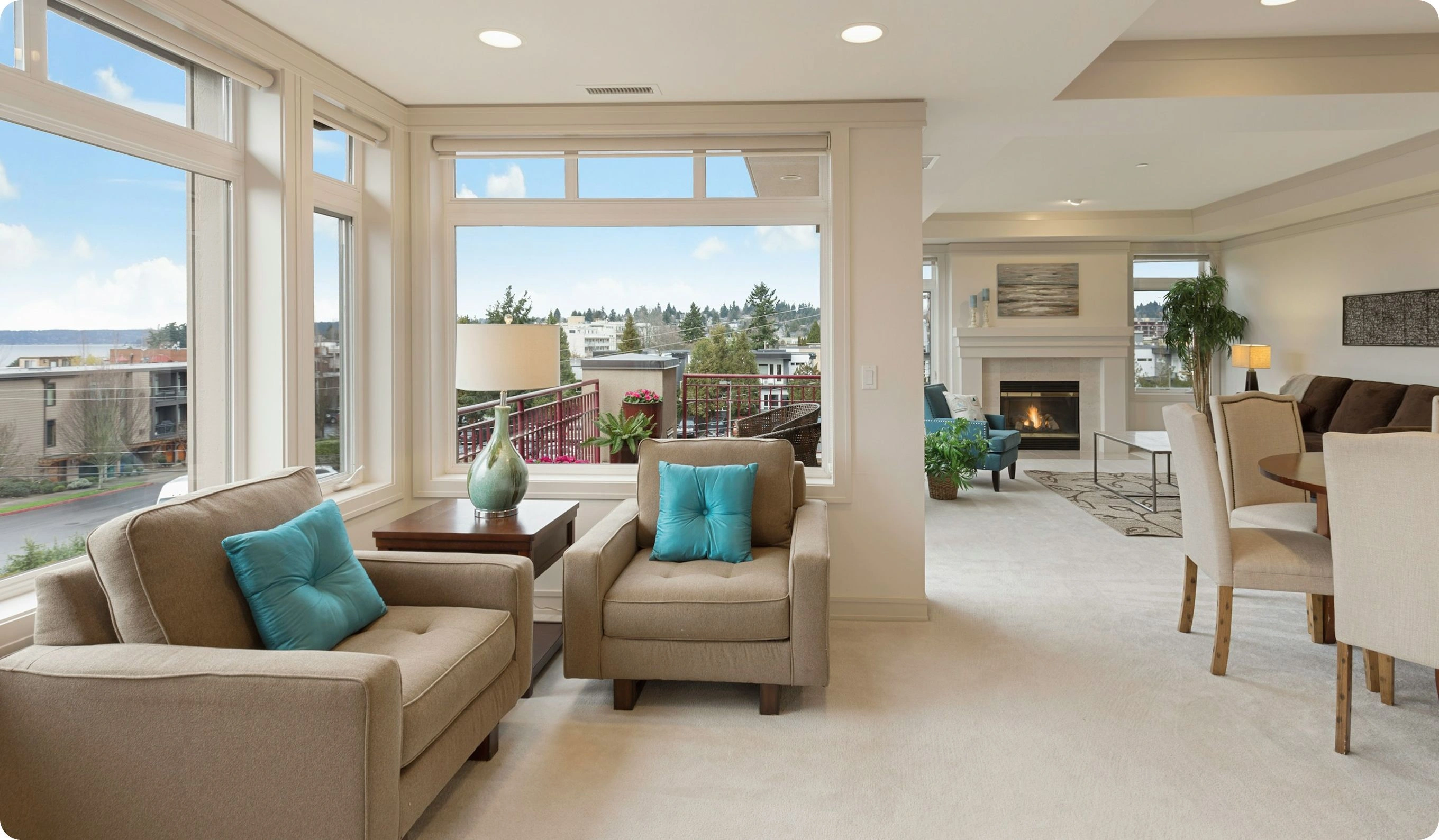Direct Owner Secondary Real Estate Listings in Katima MuliloRiverside homes boasting strategiccross-border rental yields

Best offers
in katima-mulilo
Benefits of investment in
Namibia real estate
Move-In Ready Homes
Pre-owned riverfront houses in Katima-Mulilo come fully renovated with modern kitchens, energy-efficient glazing, upgraded plumbing systems, reinforced foundations, reliable water supply and solar backup—enabling immediate occupancy or short-term rental without additional downtime.
Mature Infrastructure
Katima-Mulilo’s established townships feature sealed roads, reliable NamWater supply, stable Nampower electricity with generator backups, high-speed fiber broadband, public transport links and proximity to schools, hospitals and trade routes—ensuring seamless living and tenant satisfaction.
Proven Rental Demand
Consistent leasing of fully-refurbished apartments and houses by cross-border traders, government employees and adventure tourists sustains occupancy above 75%, yielding documented net returns of 6%–8% annually and offering investors clear exit strategies.
Move-In Ready Homes
Pre-owned riverfront houses in Katima-Mulilo come fully renovated with modern kitchens, energy-efficient glazing, upgraded plumbing systems, reinforced foundations, reliable water supply and solar backup—enabling immediate occupancy or short-term rental without additional downtime.
Mature Infrastructure
Katima-Mulilo’s established townships feature sealed roads, reliable NamWater supply, stable Nampower electricity with generator backups, high-speed fiber broadband, public transport links and proximity to schools, hospitals and trade routes—ensuring seamless living and tenant satisfaction.
Proven Rental Demand
Consistent leasing of fully-refurbished apartments and houses by cross-border traders, government employees and adventure tourists sustains occupancy above 75%, yielding documented net returns of 6%–8% annually and offering investors clear exit strategies.

Useful articles
and recommendations from experts
Main title about secondary real estate in Katima-Mulilo
Why secondary properties attract buyers
Katima-Mulilo’s secondary real estate market appeals to buyers seeking immediate occupancy, proven infrastructure, and transparent financial benchmarks in Namibia’s remote Caprivi Corridor. Unlike new developments, which can be delayed by protracted planning approvals, remote-site logistics and material import costs, pre-owned homes, apartments, and estate properties come fully commissioned with operational utilities and turnkey readiness. Municipal water from NamWater is reliably distributed through established pipelines, while Nampower’s electrical grid is supplemented by diesel generator backups and growing solar microgrid installations—effectively eliminating activation risk. Telecom networks provided by MTC and Paratus ensure high-speed fiber and 4G broadband connectivity for remote working and international teleconferencing. Sealed arterial roads maintained by the Roads Authority link core residential precincts to the Trans–Caprivi Highway, facilitating cross-border access to Zambia, Botswana, and Angola for commerce and tourism. Pre-inspected electrical panels, tested borehole pumps, and reinforced concrete foundations designed for seasonal flooding allow buyers to avoid unpredictable post-acquisition capital expenditure. Historical transaction data recorded by the Ministry of Lands and the Katima-Mulilo Municipality provides rigorous comparables for valuation and risk assessment. With documented net rental yields consistently ranging between 6% and 8% per annum across mature districts—influenced by demand from government employees, NGO personnel, seasonal safari operators, and cross-border traders—secondary real estate in Katima-Mulilo delivers an optimal fusion of lifestyle accessibility and quantifiable investment performance underpinned by VelesClub Int.’s holistic advisory services.
Established neighbourhoods
Katima-Mulilo’s secondary segment is anchored by a network of mature urban and peri-urban precincts, each offering unique living and investment advantages. In the heart of town, the central business district around the main road features pre-war colonial-style houses and mid-century apartment blocks, many refurbished with modern composite roofing, insulated walls, and granite-topped kitchens. These core residences benefit from direct access to the Zambezi River timber walkway and proximity to municipal market stalls, international schools such as the Zambezi Upper Primary and secondary campuses, and the recently expanded State Hospital. Eastwards, the Mwandi Road corridor comprises low-rise condominium complexes that were originally built for civil servants; turnkey renovations here include reinforced steel windows, smart-meter electricity connections, and landscaped communal courtyards—ideal for expatriate families and diplomatic staff. Along the Trans–Caprivi Highway to the west, estate developments in Sibasa Street consist of single-family bungalows on one-acre plots complete with borehole water systems, septic tanks, and solar PV arrays. These properties are prized for their steppe views and proximity to cross-border bus terminals into Botswana. Emerging micro-markets on the northern banks of the Chocolate River—Longane and Mundlelah akwaha wards—offer older council-built houses that have been systematically upgraded with new boundary walls, CCTV surveillance, and fiber broadband hookups, attracting downsizing retirees and remote-working professionals. Each sub-market benefits from fully sealed roads, reliable NamWater pressure, uninterrupted Nampower supplies, and integrated mini-bus and taxi routes, ensuring minimal post-purchase capex and seamless integration into Katima-Mulilo’s established urban fabric.
Who buys secondary real estate
The buyer profile for Katima-Mulilo’s secondary real estate is notably diverse, reflecting the town’s strategic location and socioeconomic dynamics. Government officials and public-sector employees acquire three- to four-bedroom houses in the West Industrial precinct, valuing turnkey interiors, secure garage parking, and proximity to regional administrative hubs. NGO staff and international aid workers secure serviced apartments in the central business district, drawn by inclusive utility packages, concierge-level building management, and walkable access to banking and logistics offices. Small safari operators and eco-lodge entrepreneurs purchase riverfront cottages and guesthouse conversions along the Zambezi embankment, leveraging immediate occupancy and existing lodge licenses for high-season tourism. Cross-border traders and logistics professionals lease compact studio flats near the main bus depot to minimize commute times and enjoy stable rental rates. Diaspora investors—from Namibia’s capital Windhoek, South Africa’s Gauteng province, and beyond—target multi-unit residential blocks in the Sibasa corridor for yield-focused portfolios, relying on VelesClub Int.’s proprietary exit-strategy modelling and lease rollout guidance. Across all segments, unifying priorities include immediate occupiable condition, transparent title flows, integration into reliable infrastructure networks, and access to VelesClub Int.’s end-to-end service platform to mitigate operational risk and maximize returns.
Market types and price ranges
The secondary real estate spectrum in Katima-Mulilo spans a comprehensive range of property typologies and budget tiers to accommodate diverse investment objectives. Entry-level one-bedroom flats and studio units in the central business district start at approximately NAD 600,000 to NAD 900,000 (USD 40,000–60,000), featuring laminate finishes, communal laundry facilities, and proximity to the main market and municipal services. Mid-range two- to three-bedroom family homes and townhouse complexes in Mwandi Road and Sibasa Street trade between NAD 1.2 million and NAD 2.5 million (USD 80,000–165,000), offering granite kitchen surfaces, upgraded bathrooms, secure garages, and landscaped gardens. Premium riverfront villas and heritage colonial residences along the Zambezi embankment command NAD 3 million to NAD 6 million (USD 200,000–400,000), driven by plot size, bespoke interior renovations, direct mooring rights, and panoramic river vistas. For portfolio investors, small multi-unit blocks (4–6 units) in the West Industrial precinct and the Chocolate River wards list between NAD 2 million and NAD 4 million (USD 130,000–260,000), delivering diversified rental income streams and economies of scale. Financing options through local lenders—FNB Namibia, Nedbank Namibia, and the Namibia Housing Corporation—offer mortgage rates of 8%–10% per annum with typical down payments of 20%–30%. Documented net rental yields average 6%–8% per annum across core corridors—a benchmark that VelesClub Int. integrates into its detailed yield-modelling and strategic acquisition planning services.
Legal process and protections
Purchasing secondary real estate in Katima-Mulilo follows Namibia’s robust conveyancing framework under the Deeds Registries Act and local municipal by-laws. Transactions commence with a signed Notarial Deed of Sale and payment of a non-refundable deposit—commonly 5%–10% of the purchase price—held in trust by the conveyancer. Buyers undertake exhaustive due diligence: land survey confirmation through the Surveyor-General’s office; Title Deed searches at the Deeds Registry to verify chain of ownership, servitudes, and encumbrances; municipal rates and taxes clearances from the Katima-Mulilo Municipality; and structural integrity reports for floodplain compliance. Upon satisfaction, parties execute the final notarial deed before the registrar, at which point transfer duty—calculated at 1% to 4% of property value depending on price bands—and registration fees are payable. The new deed is then registered, granting formal legal recognition and public notice. Foreign investors may acquire residential property with Ministerial approval subject to reciprocity; leasehold options up to 99 years are also available. Statutory protections—including warranties against fraud, bonded finance safeguards, and recourse through the High Court—further protect purchasers. VelesClub Int. orchestrates the entire process—due-diligence coordination, document drafting, municipal clearance management, and registry filings—ensuring compliance, mitigating legal risk, and delivering a seamless closing experience for both domestic and international clients.
Best areas for secondary market
Certain micro-markets in Katima-Mulilo stand out as secondary real estate hotspots due to established infrastructure, amenity clusters, and strong rental performance. The Zambezi Riverfront precinct remains the flagship corridor, with renovated colonial villas and guesthouse complexes commanding high-season yields of 8%–10%—driven by safari operator leases and eco-tourism stays. Sibasa Street and Mwandi Road deliver stable residential occupancy from government employees and diplomatic staff, yielding 6%–8% net due to turnkey readiness and proximity to cross-border office hubs. The West Industrial precinct—including Dilolo and the Giant’s Cup golf estate—offers compact multi-unit developments with yields of 6% from corporate lease contracts and expatriate rentals. Emerging nodes in the Chocolate River wards—Mundlelah akwaha and Longane—provide older family homes and council properties converted to apartments, attracting downsizing retirees and remote workers with yields of 7% amid rising demand. Each precinct benefits from sealed roads, reliable NamWater and Nampower services, high-speed broadband, integrated taxi and shuttle routes, and proximity to schools, healthcare and retail amenities—ensuring stable occupancy, transparent pricing, and strong resale prospects. VelesClub Int.’s proprietary precinct-scoring algorithm and on-the-ground market research guide clients to sub-markets that optimally balance yield targets, capital-appreciation forecasts, and lifestyle preferences within Katima-Mulilo’s dynamic secondary real estate ecosystem.
Why choose secondary over new + VelesClub Int. support
Opting for secondary real estate in Katima-Mulilo delivers distinct advantages over new-build developments: immediate possession, proven civic infrastructure, and transparent historical performance. Buyers bypass lengthy approvals, import-related delays and contractor uncertainties by selecting turnkey assets with established utility networks and reinforced structures. Secondary properties often showcase authentic Caprivi architectural character—timber veranda frames, pitched corrugated roofs, ornamental metal balustrades and mature gardens—that new constructions cannot replicate, enhancing cultural authenticity and long-term desirability. Lower entry premiums relative to off-plan offerings free up capital for interior personalization, smart-home integrations or strategic portfolio diversification across multiple precincts. Mature municipal services—reliable NamWater supply, uninterrupted Nampower electricity, sealed roads, integrated mini-bus and cross-border shuttle routes, and high-speed broadband—ensure seamless move-in and minimal post-purchase maintenance. VelesClub Int. elevates the acquisition journey with comprehensive end-to-end expertise: sourcing exclusive off-market listings, conducting exhaustive due diligence, negotiating optimal terms, and managing all legal formalities. Our post-closing property management solutions—tenant placement, preventive maintenance coordination, and transparent performance reporting—optimize occupancy rates and preserve capital value. Through proactive portfolio monitoring, annual market reviews, and strategic advisory, VelesClub Int. empowers clients to maximize Katima-Mulilo’s secondary real estate potential with confidence, clarity, and operational efficiency.
